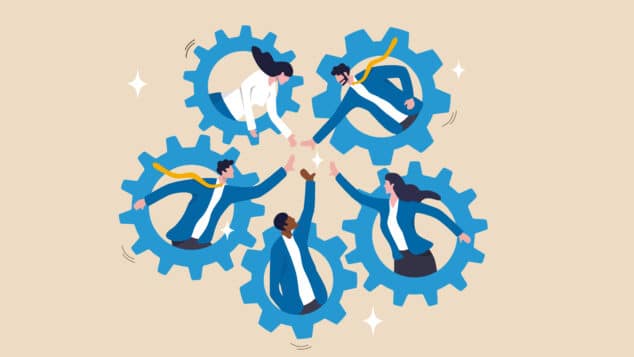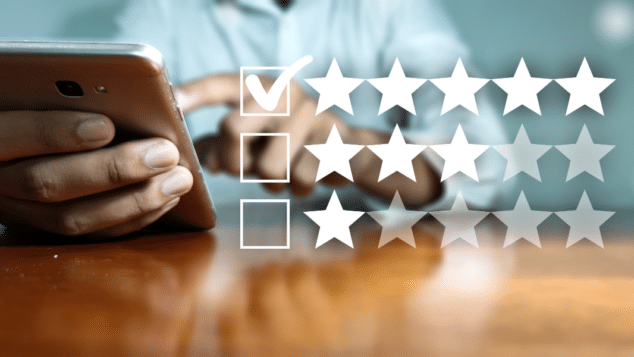Realigning Strategies to Better Serve Members in the Pandemic

After COVID-19 hit, it was clear that 2020 was not going to be the same for associations. In fact, according to a study conducted by CS-Effect and Researchscape, 66% of association executives indicated they converted their live event to a virtual meeting this year, with another 12% canceling altogether. Many quickly learned the challenges of developing virtual programming and focused on engaging members through webinars (84%) and more frequent e-communications (75%), according to the survey.
While associations continue to struggle with engaging members in new ways, the American Industrial Hygiene Association (AIHA) has turned the challenges of COVID-19 into an opportunity to connect and develop a renewed sense of energy for its 8,500 members. It hired CS-Effect to help shift focus from programming to supporting the profession and demonstrating value. In many ways, AIHA leveraged COVID-19 to become more introspective and realigned its strategies to serve its members in ways never possible before the pandemic.
AIHA is an association for scientists and professionals committed to preserving and ensuring occupational and environmental health and safety (OEHS) in the workplace and community. Founded in 1939, the association supports members with expertise, networks, comprehensive education programs and other products and services that help them maintain the highest professional standards. AIHA serves as a resource for people employed across the public and private sectors, as well as for the communities in which they work.
AIHA members were among the first professionals to see the impact of COVID-19 when the pandemic infiltrated companies. Many members were forced to develop risk mitigation plans to keep employees safe from COVID-19 while continuing to work.
As Richard Fulwiler, Sc.D, CIH, FAIHA, instructor at Harvard School of Public Health explains, “We need to leverage this opportunity. Most people have never heard of PPE [personal protective equipment] until now, and OHES [occupational health and environmental services] professionals are the experts in understanding the proper use of PPE.”
Dr. Fulwiler was not the only member to express interest in leveraging this unique opportunity. AIHA received calls from members — who were spread out across the nation and represented all industries — indicating their frustration with the national news miscommunicating the proper use of PPE. As a result, AIHA launched a national campaign to educate the public about a variety of issues. That included proper use of PPE, guidance on cleaning and disinfection, engineering controls to improve indoor air quality, reopening protocols for buildings closed due to the shutdown and more.
AIHA proactively reached out to journalists, encouraging them to speak with AIHA members. A group of members volunteered to serve as spokespeople representing specific industries and various expertise. These experts shared their experiences and knowledge at a time when previous exposure to mass media was limited at best. AIHA recognized this opportunity to share with the world what they realized all along: Workplace health and safety are a systemic force toward economic security. Safe and healthy workplaces maximize output and minimize risk (and all that comes with it).
According to AIHA CEO Lawrence Sloan, “COVID-19 has put a spotlight on our profession and positioned many of our members front and center as experts in occupational health in their workplaces and in the forefront of the country’s public eye.”
As a result, AIHA secured national news stories in USA Today, The Wall Street Journal and more. However, positioning AIHA members as experts in PPE was only the beginning. AIHA was interested in developing industry-specific guidelines on how companies could reopen their businesses safely. Members generously dedicated hundreds of hours to develop valuable resources for employers seeking to reopen their buildings and protect their workers and customers from COVID-19. The Back to Work Safely Task Force consisting of 25 members, plus a COVID-19 ad hoc committee of approximately 30 volunteers, formed in April and were charged to work with already-established committees such as the Indoor Environmental Quality Committee and the Non-Ionizing Radiation Committee to develop guidance documents, infographics, white papers and fact sheets.
One major initiative that these committees undertook was the Back to Work Safely project.
The committees worked together to develop guidelines (backtoworksafely.org), including recommendations on ventilation, personal hygiene, physical distancing and enhanced cleaning. The target industries, services and facilities include:
- Amateur sports
- At-home service providers
- Bars
- Business services
- Childcare providers
- Construction
- Dentistry
- General office settings
- Gyms and workout facilities
- Hair and nail salons
- Houses of worship
- Institutions of higher education
- K–12 schools
- Libraries
- Massage therapy
- Museums and collecting institutions
- Physical and occupational therapy
- Retail
- Restaurants
- Rideshares, taxis, limos and other passenger drivers-for-hire
- Small manufacturing and maintenance shops
- Small entertainment venues (e.g., mini golf and arcades)
- Small and medium sports facilities
- Small lodging establishments
- Street vendors and farmers markets
- Transit systems
- Warehousing/transportation
In addition to authoring guidelines, AIHA received requests for members to speak at virtual conferences on COVID-19-related topics, including Chain Store Age’s SPECS virtual conference. Here, AIHA secured a member volunteer, David Krause, Ph.D., MSPH, CIH, immediate past chairman of the AIHA Indoor Environmental Quality Committee, to share his expertise on best practices for retailers, including how specific changes to the operation and filtration of heating, ventilation and air conditioning systems can reduce airborne exposure to COVID-19 and other viruses.
The global pandemic has proved to be a driving force in engaging members who had never volunteered. AIHA reflected on its priorities and recognized the need to make changes midcourse. Staff and volunteer leaders pushed their established strategies aside and instead elevated the needs of the profession. In doing so, this association demonstrated strong action and responsiveness to its members during an unprecedented time and undoubtedly increased the loyalty, affinity and engagement among its members.
While leading an organization during a pandemic raises new and difficult challenges, in the case of AIHA, it has also produced some of Sloan’s most rewarding experiences.
“I am so proud of our volunteers for their invaluable input and action to help make the world a healthier place during this uncertain time,” he says. Sloan believes the future is bright for AIHA members, which means a bright future for everyone’s health and safety as well.
Click here for more information on how your organization can get back to work safely.
Tags
Related Articles
Building Tomorrow: HACIA’s Member Development Initiatives Are Reshaping the Construction Industry
Jacqueline Gomez, Executive Director of the Hispanic American Construction Industry Association (HACIA), describes the crucial...
Workforces at the Crossroads: Thriving Associations in a Changing Professional World
Unique pressures on professional workforces are changing the landscape for associations. Association leaders need precise...
Experience + Value = A New Formula for Successful Member Engagement
An interview with Amanda Lea Kaiser, author of “Elevating Engagement: Uncommon Strategies for Creating a...




